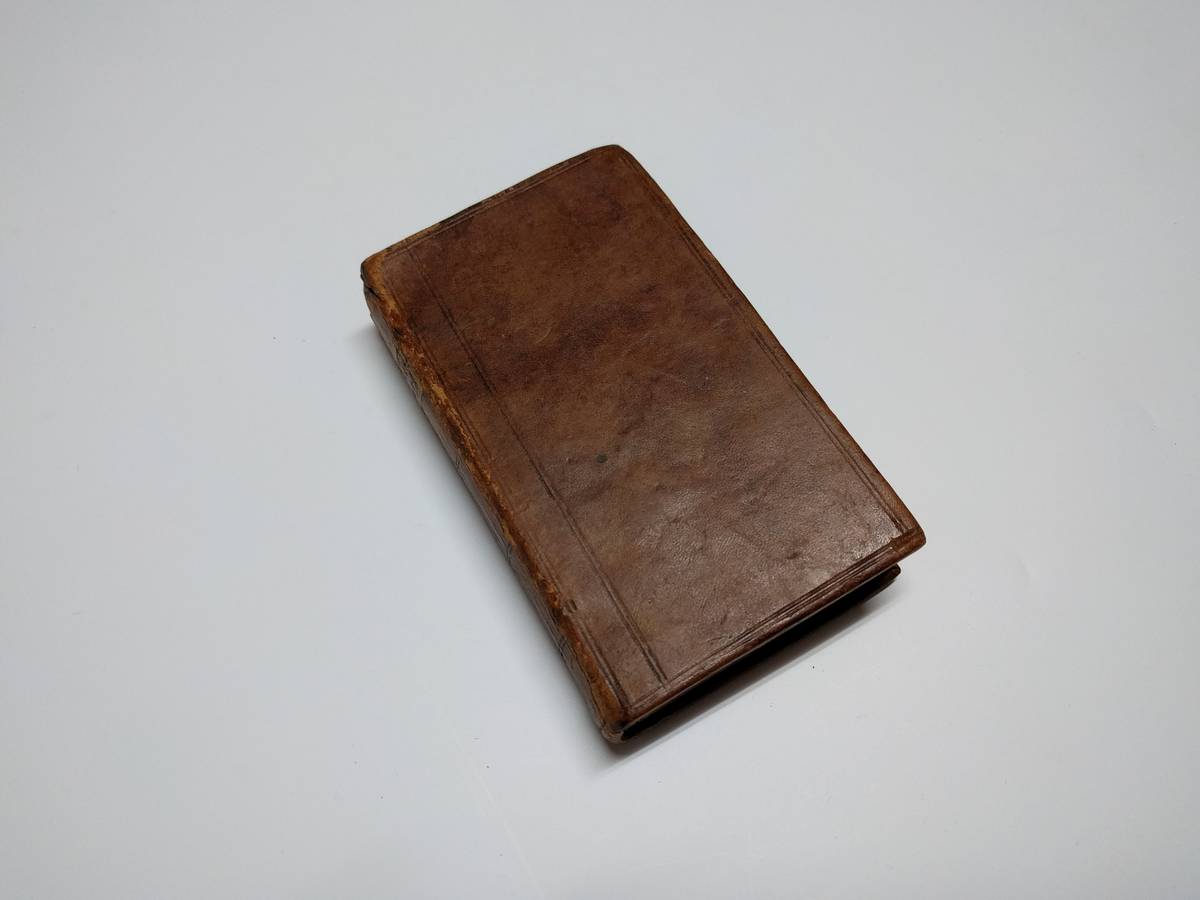SALMASIUS,C.
Claudii Salmasii Ad Johannem Miltonum responsio, opus posthumum.
London (Londoni), Typis Tho. Roycroft, Impensis Jo. Martin (etc.), 1660.
12mo. (IV),304,(4 blank) p. Contemporary calf. 16 cm (Ref: ESTC Citation No. R203484; Wing (2nd ed.) S736; Ebert 14095) (Details: Double blind fillet on back and boards. Red shield with gilt lettering in the second 'compartment') (Condition: Binding scuffed(Photographs on request) . Head of the spine damaged. First pastedown detached, pastedown at the end removed) (Note: The English Civil War (1642-1651) was a series of armed conflicts between Parliamentarians and Royalists, who supported King Charles I. The war ended with a Parliamentarian victory in 1651. The climax of the Civil War was the trial and execution of King Charles I on January 30, 1649. The monarchy was replaced with a Republic form of government, first the Commonwealth of England (1649-1653), and then the Protectorate under the rule of the dictator Oliver Cromwell, who died in 1658, and his son (1653-1659). Charles II, son of Charles I, went in exile. Cromwell's death in 1658 resulted in a political crisis, which led to the restoration of the monarchy, when the English Parliament resolved to invite the son of Charles I to return. He was proclaimed King in May 1660. § In November 1649, 10 months after the beheading of Charles I, the French classical scholar Claudius Salmasius (Claude Saumaise, 1588-1653), who was professor at the University of Leiden, published at the request of the 19 years old king in exile Charles II a 'Defensio Regia pro Carolo I' (In defence of King Charles I). On the title page Charles II is called 'heredem et successorem legitimum'. It was brought on the market anonymously, and 'sumptibus regiis', by Elsevier at Leiden. The exiled King paid for the printing and rewarded Salmasius with £ 100. It is a defence of absolute monarchy and a fierce condemnation of the English Parliamentary system. § The 'Defensio Regia pro Carolo I' came as a bombshell and provoked in 1651 a scathing reply from the English poet and polemist John Milton, 'Pro Populo Anglicano Defensio' (A Defense of the People of England). Milton, who was appointed under Cromwell 'Secretary for Foreign Tongues' in 1649, was responsible for the Republic's foreign correspondence in Latin, but it was also his task to produce propaganda for the new regime. Milton was ordered by the Council of State to write the 'Defence of the English People', to establish its legitimacy. In this work full of learned vituperation, Milton alludes to Salmasius' effeminacy, comparing him with the Greek mythological Hermaphrodite Salmacis, and he also attacks his wife, Anne Mercier, who wore, that was true, the trousers. The pure Latin prose and the evident learning made Milton's name in Europe. The English philosopher Thomas Hobbes, a contemporary, observes concerning both 'Defences': 'They are very good Latin both, and hardly to be judged which is better; and both very ill reasoning, hardly to be judged which is worse; like two declamations 'pro' and 'con', made for exercise only in a rhetoric school by one and the same man'. (Hobbes, Behemoth, Dialogue IV) Hobbes' opinion of this learned controversy is devastating: 'Where Europe thought it had witnessed the sharpest possible contest of principle between an opponent of regicide on one side and a defender of it on the other, Hobbes saw unwitting collusion between twin offpspring of the Reformation. (...) Nor is the remark about the excellence of their Latin offered in mitigation. On the contrary, it is intended to aggravate their offence. (...) Milton and Salmasius are condemned for exhibiting the (...) lethal combination of attributes: eloquence and ill reasoning'. (M. Dzelzainis, 'Milton's classical republicanism' in 'Milton and Republicanism', Cambridge 1995, p. 7) § Salmasius prepared a reply (responsio) to Milton, but he did not live to finish it. It was published posthumously by his son at Dijon in 1660, a few months after the restoriation of Charles II, and reissued at London in September of the same year) (Collation: A-N12 (leaves N11 & N12 blank)) (Photographs on request)
Book number: 155426 Euro 525.00
Keywords: (Rare Books), English History, English imprints, Neulatein, Salmasius, Saumaise, englische Geschichte, neolatin literature, neulateinische Literatur
 SALMASIUS,C.
SALMASIUS,C.